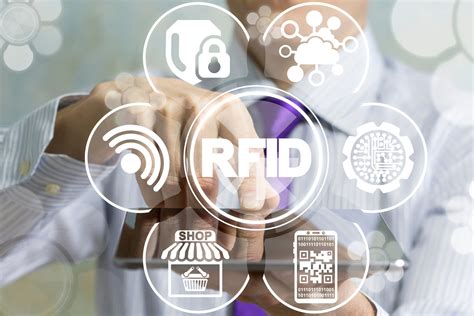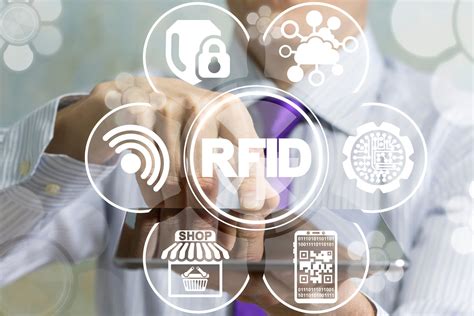How RFID Technology Combats Counterfeit Goods
1. What is RFID Technology and How Does It Work?
Radio Frequency Identification (RFID) technology uses electromagnetic fields to automatically identify and track tags attached to objects. An RFID system consists of three main components: an RFID tag, an RFID reader, and an antenna. The tag contains a chip and an antenna, which communicate with the reader to transmit information.
RFID technology operates through two types of tags: active and passive. Active tags have their own power source, while passive tags draw power from the RFID reader’s signal. This capability allows passive RFID tags to be more affordable and widely used in various industries.
The process begins when an RFID reader emits a radio signal that activates the tag, allowing it to send back its stored information. This exchange happens within milliseconds, providing real-time data about the product’s identity and status.
In combating counterfeit goods, RFID technology allows companies to track their products throughout the supply chain. From the manufacturing stage to the retail environment, RFID tags enable brands to monitor their products closely.
For example, in the fashion industry, RFID tags help authenticate products by linking them to unique identifiers in a central database. This ensures that retailers and consumers can verify the legitimacy of their purchases.
Table: Comparison of RFID Tag Types
| Type | Power Source | Range | Cost |
|---|---|---|---|
| Active | Battery | Up to 100 meters | Higher |
| Passive | Reader signal | Up to 10 meters | Lower |
As a result, RFID technology acts as a deterrent against counterfeiting by providing a reliable method for tracking and verifying the authenticity of products.

2. How Does RFID Improve Supply Chain Transparency?
Supply chain transparency is crucial in the fight against counterfeit goods. RFID technology enhances visibility by providing real-time data at every stage of the supply chain. This means that companies can track products from the manufacturer to the retailer, ensuring that every item is accounted for.
RFID systems allow companies to reduce discrepancies in inventory counts, improving accuracy and efficiency. This transparency not only helps in identifying counterfeit goods but also prevents the introduction of fraudulent items into the supply chain.
Furthermore, RFID technology enables companies to conduct regular audits with minimal disruption. By simply scanning RFID tags, businesses can verify the authenticity of their products and identify any irregularities in their inventory.
List of Benefits of RFID in Supply Chain Management:
- Real-time tracking of goods
- Reduction of human error
- Improved inventory management
- Enhanced authentication processes
With greater transparency, companies can assure consumers of the integrity of their products. Retailers can quickly respond to potential counterfeiting threats, thereby maintaining brand reputation and consumer trust.
Images of RFID in action can be beneficial in illustrating its impact on supply chain transparency.

3. What Industries Benefit Most from RFID in Counterfeit Prevention?
Various industries have adopted RFID technology to combat counterfeiting, with notable benefits observed in sectors such as fashion, pharmaceuticals, electronics, and luxury goods. Each of these industries faces unique challenges associated with counterfeit products.
The fashion industry, for instance, uses RFID tags to protect their brands from counterfeit clothing and accessories. By implementing RFID technology, brands can offer consumers a way to verify the authenticity of their products.
Pharmaceutical companies are also leveraging RFID to prevent counterfeit medications. The technology allows for precise tracking of drugs throughout the supply chain, ensuring that patients receive genuine products.
In the electronics sector, RFID tags help track high-value items, preventing theft and counterfeiting. Retailers can easily scan products to verify their authenticity, reducing the risk of fraud.
Luxury brands are increasingly using RFID to secure their products against counterfeiting, as counterfeit luxury items can severely damage brand reputation. By providing a verification process for consumers, these brands can maintain their prestige and value.
Table: Industries Utilizing RFID Technology
| Industry | RFID Application |
|---|---|
| Fashion | Product authentication |
| Pharmaceuticals | Track and trace medication |
| Electronics | Prevent theft and counterfeiting |
| Luxury Goods | Brand protection and verification |
As these industries continue to embrace RFID technology, the fight against counterfeit goods will become increasingly effective.

4. How Does RFID Enhance Consumer Confidence?
Consumer confidence is paramount in the marketplace, particularly when it comes to authenticity. RFID technology plays a significant role in enhancing consumer confidence by providing a reliable means of verifying products.
When consumers can easily verify the authenticity of a product, they are more likely to trust the brand. RFID tags can link to online databases where consumers can check the legitimacy of their purchases, providing transparency and peace of mind.
In addition, brands that utilize RFID technology often market it as a feature of their products. This marketing approach not only educates consumers about the authenticity process but also reinforces the brand’s commitment to quality.
List of Ways RFID Enhances Consumer Confidence:
- Easy product verification
- Transparency in the supply chain
- Increased brand trust
- Empowerment through information
As consumers become more aware of counterfeiting issues, the presence of RFID technology can significantly influence their purchasing decisions. They are more likely to choose brands that prioritize authenticity and security.
5. What Challenges Does RFID Technology Face in Combatting Counterfeit Goods?
Despite its advantages, RFID technology faces several challenges in the fight against counterfeit goods. One primary concern is the cost of implementing RFID systems, which can be a barrier for smaller companies.
Another challenge is the need for industry-wide standards and interoperability. Without common standards, different systems may not communicate effectively, leading to inefficiencies in tracking and verification.
Additionally, there are concerns about privacy and data security. As RFID systems collect vast amounts of data, companies must ensure that they protect consumer information from unauthorized access.
List of Challenges Faced by RFID Technology:
- High implementation costs
- Lack of standardization
- Data privacy concerns
- Need for ongoing maintenance and updates
While RFID technology offers promising solutions, addressing these challenges is crucial for its widespread adoption in the battle against counterfeit goods.
6. How is RFID Used in E-commerce to Combat Counterfeiting?
The rise of e-commerce has introduced new avenues for counterfeit goods to infiltrate the market. RFID technology helps combat this issue by providing robust tracking and authentication processes for online sales.
When products are equipped with RFID tags, retailers can easily monitor inventory levels and verify the authenticity of items sold online. This helps prevent counterfeit products from being shipped to customers.
Moreover, e-commerce platforms can integrate RFID technology into their systems, allowing consumers to verify the authenticity of their purchases before finalizing transactions.
Table: RFID Integration in E-commerce
| Function | Description |
|---|---|
| Inventory Tracking | Real-time monitoring of stock levels |
| Product Verification | Authentication checks during checkout |
By implementing RFID technology, e-commerce retailers can enhance customer trust and satisfaction, ultimately leading to increased sales and brand loyalty.


